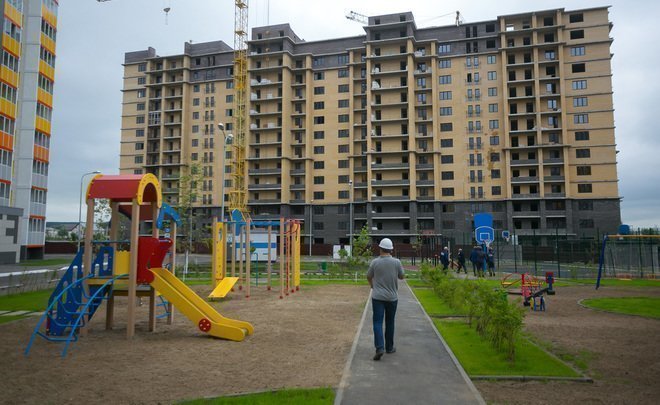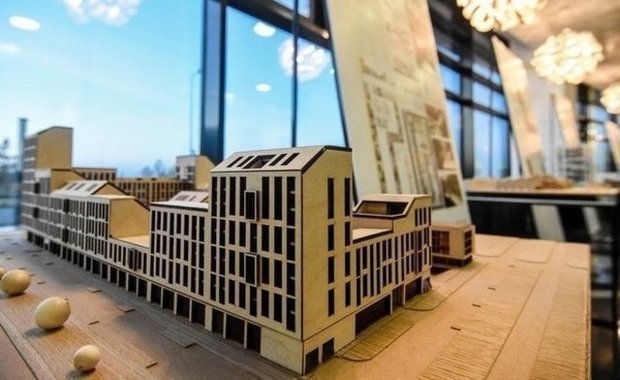Yulia Prokhorova: ‘Developers should promote the birth of children on a par with the state’
Real estate expert — on a decline in sales of Kazan new buildings in the second quarter of the year

In the second quarter, sales of apartments under construction in Kazan decreased by 70%, but at the same time, in March and April, developers sold almost 3 times more than the plan. While the secondary market really faced a drop in demand — the number of transactions fell by 23%, said Yulia Prokhorova, a real estate expert and managing partner of Perfect RED. In the author's column for Realnoe Vremya, she gives another overview of the housing market of the Tatarstan capital and forecasts how the situation will affect the primary market.
Market indicators
Due to a decrease in the number of residential real estate transactions from May to June 2022, there were forecasts of an impending collapse of the real estate market. To understand what is really happening, it is enough to delve into the dynamics of sales volumes for at least 4 years. Analysis of the data of the first half of the year showed that a real decline in sales volumes is taking place only in the secondary market. At the same time, mainly to the indicators of the “exceptional” previous year. Data on the number of transactions in the primary market do not indicate a drop, but a slight increase compared to the same period last year, even taking into account the failed months of the second quarter of 2022. In the second quarter, the sales of apartments under construction in Kazan decreased by 70%, but at the same time, in March and April, developers sold almost 3 times more than the plan. But the secondary real estate market has really faced a drop in demand. The number of transactions has decreased by 23% compared to the same period last year. And this will affect the primary market in the future: some sellers of apartments from the secondary market shift funds from the sale to objects under construction.
Mortgage
Despite the expensive mortgage, the decline in the volume of mortgage transactions is also not so critical. For example, last year we observed the lowest mortgage rates in the history of the real estate market. But this year, for four months, the rate for borrowers has been unaffordable. The secondary market is also slowing down precisely because of the high mortgage rate. The dynamics of recent years shows a significant increase in both the loan size — from 1,7 million rubles in 2018 to 3,5 million rubles in 2022, and the loan term — from 15,5 to 23 years. The uncertainty of consumers in the constancy of their incomes due to the unstable economic and political situation persists.
As the number of DDU contracts concluded in the first half of the year shows, the fear of inflationary risks prevails. Many experts continue to talk about alternative sources of capital preservation. Moreover, mortgages are more likely to lead to losses in the investment plan. But there are few alternative investment tools available and with the same level of risk on the market so far. The threat of the “cancellation” of the dollar, risks with foreign assets, the memory of the unreliability of bank deposits, and especially the collapsed stock market again push investors to save money and invest in apartments, including with the involvement of mortgages.
Using the state support programme “Maternity Capital”, the government continues to help developers increase the number of new shareholders. The demand for apartments is generated by families with two or more children. Therefore, developers should adopt the experience of foreign companies and, along with the state, popularise the birth of children, thereby increasing their target audience. For example, Nike once increased the number of consumers by popularising sports among the population.
Sale prices
Due to the sharply increased demand for investment housing at the end of February 2022, prices jumped by 36%. Buyers who ran to buy “concrete” stimulated another jump in prices. At the same time, for the first time since 2006, the cost of objects under construction began to significantly exceed the cost of housing on the secondary market — by 12,5%. There are several reasons:
- affordable mortgage on primary real estate (veiled discounts of developers at rates of 0,1%);
- almost complete transition to escrow accounts (developers do not receive money from shareholders until the end of construction and they are not interested in selling at a discount at the start of sales);
- increased demand for a “quick” deal in February-April (apartments on the secondary market are more difficult to check in a short time, and it was necessary to invest cheaper money against the background of the special operation urgently).
Such a gap in value between new buildings and the secondary market cools investment interest, as the effect of a “Mercedes leaving the salon and immediately losing value” is created. At the same time, there is a risk of a further fall in the value of the secondary market against the background of the crisis that we observed in 2009 and 2016. The rise in prices has also affected the size of the mortgage payment, which is becoming a barrier in the secondary market. At the time of the study, the comparison of average prices in the primary and secondary housing market in the context of monthly mortgage payments is as follows: an average one-bedroom apartment on the secondary market will cost 52,709 rubles per month, and in an object under construction — 35,586 rubles per month, and this is not counting the cost of repairs and rent of an apartment until the end of construction.
To calculate, we take the average rates on the lending market and subsidised rates from developers.
Outlook
When forecasting prices, it is important to look not only at the dynamics of demand, but also at the dynamics of supply. In recent years, the number of housing under construction has been increasing, but at the same time, absorption has also been growing. Major federal players have entered the market of Kazan: PIK, Samolet, Etalon. The latter acquired the Finnish company YIT, which left the Russian market. In Kazan, Etalon resumed the construction of the Suita residential complex on Pavlyukhina Street, started by the Finns.

By the middle of 2022, there is no more housing under construction on the market than in 2018. If demand falls, excess supply will lead to lower prices. There is a scenario in which large federal players will increase the number of projects. New residential complexes are likely to be sold in the territories adjacent to Kazan. Soon we will have to introduce a new terminology for the designation of sub-markets in the analysis of the housing market: the sub-markets “Kazan” and “New Kazan” (by analogy with “New Moscow”). If this scenario is implemented and many new projects enter the market at the same time, then prices for residential projects located in the agglomeration will be adjusted downward. The fact that demand directly depends on the availability of mortgages has been said for a long time. Forecasts on sales rates and the price per square metre have to be made based on the availability of mortgage lending. At the moment, the maximum amount of the initial mortgage payment is 1,154 thousand rubles, and the monthly payment is no more than 35 thousand rubles. A decrease in household incomes and an increase in unemployment lead to a reduction in demand for housing. It is impossible to say with accuracy, but if the drop in demand by the end of the year is no more than 10%, then developers will be able to continue to keep current prices. 90% of the apartments will be sold before the completion of construction under DDU (shared-equity construction) contracts. Developers will sell less, but more expensive (such as gas and oil). Under such conditions, prices on the secondary market will be adjusted downward to 15%. The further development of the market situation will be significantly influenced by the factor of state support. The situation can unfold in two directions: reduction of rates on project financing to increase the volume of construction and the allocation of state support to finance mortgages for the purchase of secondary housing.
Firstly, it is beneficial for the state to maintain the volume of construction, which supports the level of employment in related industries. Secondly, the most obedient citizen is a person with obligations in the form of a mortgage loan for 20 years. When financing mortgages on the secondary market, a further increase in prices for new buildings and stagnation of prices on the secondary market is likely.
Reference
The author's opinion may not coincide with the position of the editorial board of Realnoe Vremya.